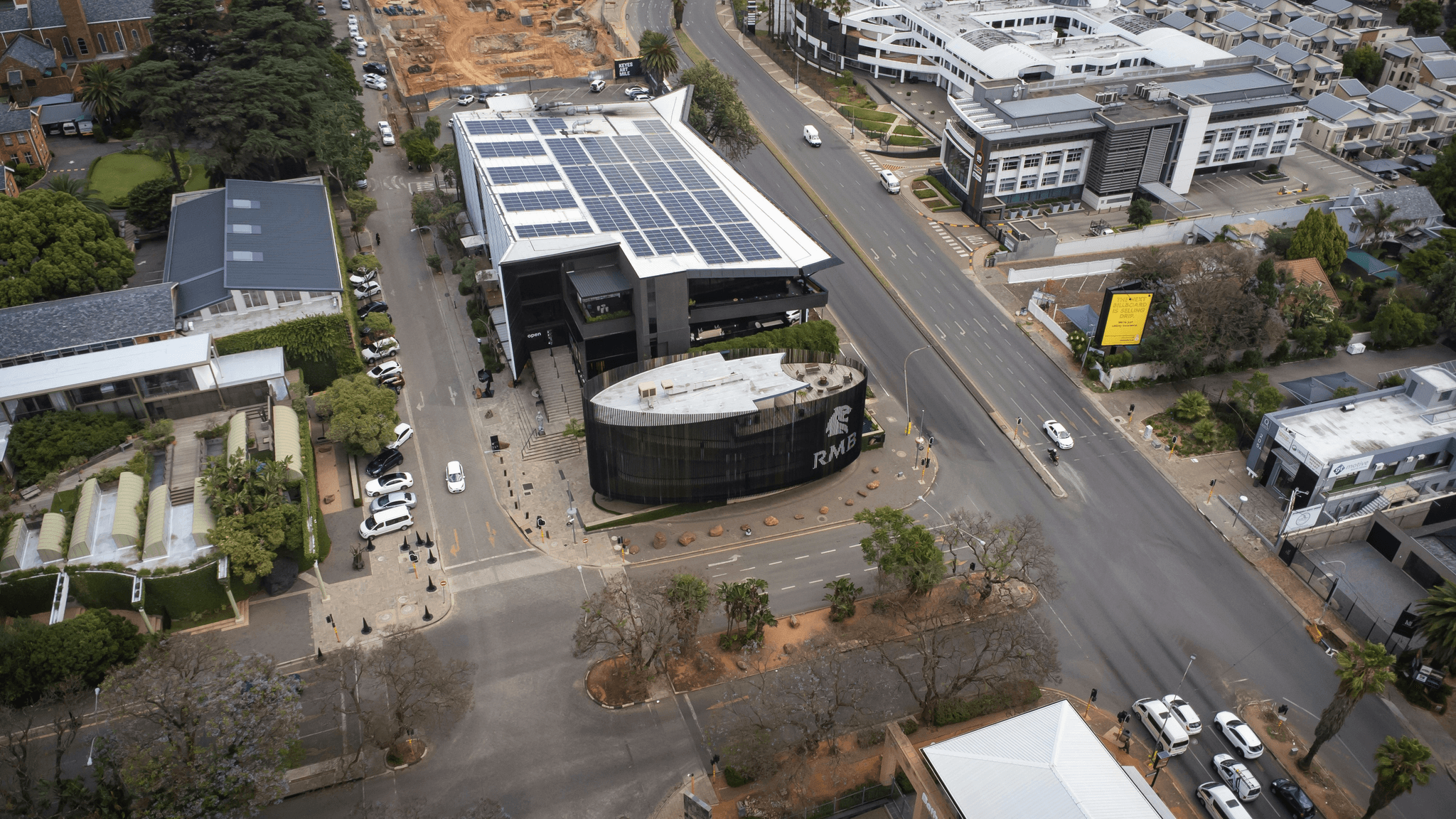Introduction

Electricity planning is a crucial aspect of managing energy consumption in any setting, whether it's a home, business, or community. By carefully strategizing and implementing an effective electricity plan, individuals and organizations can significantly reduce their energy costs, minimize environmental impact, and ensure a reliable power supply for the future. This introduction will provide valuable insights into the importance of electricity planning, offer solutions to common challenges, and guide you through the process of creating a successful electricity planning strategy.
Understanding the Importance of Electricity Planning
Understanding the importance of electricity planning is essential for anyone looking to optimize their energy usage. With a well-thought-out plan in place, you can proactively manage your energy consumption, identify areas for improvement, and ultimately save money on your electricity bills. Moreover, effective electricity planning contributes to environmental sustainability by reducing carbon emissions and conserving valuable natural resources.
Overcoming Challenges in Electricity Planning
While electricity planning offers numerous benefits, it also comes with its fair share of challenges. Common obstacles include navigating complex energy regulations, securing funding for energy-saving initiatives, and ensuring stakeholder buy-in for proposed changes. Overcoming these challenges requires careful consideration and strategic decision-making to create a plan that is both feasible and impactful.
Implementing a Successful Electricity Planning Strategy
Implementing a successful electricity planning strategy involves careful assessment of current energy consumption patterns, conducting cost-benefit analyses to determine investment viability, developing comprehensive plans with clear objectives and milestones, investing in advanced technology such as renewable energy options or smart grid solutions, training employees on energy conservation practices, monitoring progress through data-driven adjustments to the plan and adhering to regulatory compliance.
Assessing Current Energy Consumption

In order to effectively manage your electricity usage, it's crucial to start by assessing your current energy consumption. This involves analyzing your electricity usage data over a period of time to gain insights into your peak consumption hours and areas of high energy use. By identifying these patterns, you can pinpoint opportunities for improvement and make informed decisions about where to focus your energy-saving efforts.
Analyzing Current Electricity Usage Data
One way to analyze your current electricity usage data is by reviewing your utility bills and meter readings. Look for trends in your energy consumption, such as spikes during certain times of the day or year. You can also use energy monitoring tools or smart meters to gather real-time data on how and when electricity is being used in your home or business. This information will help you understand where you are using the most electricity and where there is potential for savings.
Identifying Areas for Energy Efficiency Improvement
Once you have a clear picture of your current energy consumption, it's time to identify areas where you can make improvements in energy efficiency. This may involve conducting an energy audit to assess the performance of appliances, lighting, heating, and cooling systems, as well as insulation and air sealing. By pinpointing areas that are consuming more energy than necessary, you can prioritize upgrades or replacements that will have the greatest impact on reducing electricity usage.
Setting Realistic Reduction Goals
After analyzing your electricity usage data and identifying opportunities for improvement, it's important to set realistic reduction goals for your energy consumption. This could involve aiming for a certain percentage decrease in overall electricity usage or targeting specific areas for improvement, such as reducing peak demand during high-consumption periods. By setting achievable goals based on the insights gained from analyzing your current energy consumption, you can track progress and measure the success of your electricity planning efforts.
Conducting a Cost-Benefit Analysis

When it comes to electricity planning, evaluating the financial implications is crucial for success. By carefully assessing the costs and benefits, you can make informed decisions about energy-saving initiatives. This involves calculating the initial investment required for implementing energy efficiency measures and comparing it to the potential long-term savings.
Evaluating the Financial Implications of Electricity Planning
As you dive into electricity planning, it's essential to evaluate the financial implications thoroughly. This includes analyzing the costs associated with upgrading equipment, implementing new technologies, and conducting employee training. Additionally, consider potential savings from reduced energy consumption and lower utility bills over time.
Determining Return on Investment for Energy Saving Initiatives
Determining the return on investment (ROI) for energy-saving initiatives is a key step in electricity planning. By calculating the expected savings from each initiative and comparing it to the initial investment, you can prioritize which measures will provide the most significant impact. This helps in making strategic decisions that align with your budget and long-term goals.
Identifying Potential Funding Sources for Implementation
Identifying potential funding sources is essential for implementing your electricity plan effectively. Look into government grants, rebates from utility providers, or financing options specifically designed for energy efficiency projects. By securing additional funding, you can offset some of the upfront costs and accelerate your progress towards a more sustainable energy future.
Developing a Comprehensive Electricity Plan

Developing a comprehensive electricity plan is crucial for effective energy management. This involves creating a detailed roadmap for energy efficiency measures that address specific areas of improvement within your organization. By outlining clear objectives and milestones, you can track progress and ensure that your plan stays on course. Involving stakeholders in the development process is also key to gaining buy-in and support for the initiatives.
Creating a Detailed Roadmap for Energy Efficiency Measures
When creating a detailed roadmap for energy efficiency measures, it's important to conduct a thorough assessment of your current energy consumption. This involves analyzing data to identify areas where improvements can be made, such as upgrading to more energy-efficient equipment or implementing better insulation practices. By mapping out specific actions and timelines, you can ensure that your plan is actionable and realistic.
Establishing Clear Objectives and Milestones
Establishing clear objectives and milestones provides a framework for measuring progress and success. Whether it's reducing overall energy consumption by a certain percentage or achieving specific cost savings targets, having these benchmarks in place will help keep your team focused and motivated. It's important to set realistic goals that are attainable within the given timeframe while still pushing the boundaries of what's possible.
Involving Stakeholders in Plan Development
Involving stakeholders in the development of your electricity plan is essential for gaining their support and commitment to its success. This includes engaging with employees at all levels of the organization, as well as seeking input from external partners or customers who may be impacted by your energy initiatives. By fostering collaboration and open communication, you can ensure that everyone feels invested in the plan's outcomes.
By involving stakeholders in the development process, you can tap into diverse perspectives and expertise that will enrich your electricity planning efforts while building consensus around the proposed strategies.
In conclusion, developing a comprehensive electricity plan requires careful consideration of current energy usage, setting clear objectives, involving stakeholders, and creating actionable steps towards greater efficiency.
Empowering sustainable future through effective electricity planning will not only benefit your organization but also contribute positively to our environment.
Investing in Advanced Technology

In the ever-evolving landscape of electricity planning, investing in advanced technology is crucial for achieving long-term energy efficiency. By exploring renewable energy options, such as solar panels or wind turbines, homeowners can significantly reduce their reliance on traditional power sources. When adopting smart grid solutions, like energy storage systems or demand response technologies, homeowners can better manage their electricity usage and contribute to a more stable and sustainable grid. Additionally, leveraging energy management systems allows for real-time monitoring and control of energy consumption, empowering homeowners to make informed decisions about their usage.
Exploring Renewable Energy Options
One of the most impactful ways to enhance electricity planning is by exploring renewable energy options for the home. Installing solar panels not only reduces reliance on the grid but also offers the opportunity to sell excess energy back to utility companies through net metering programs. Similarly, wind turbines can be a viable option for properties with sufficient space and adequate wind conditions. By harnessing natural resources, homeowners can take a proactive approach towards sustainable energy consumption while also potentially reducing their utility bills.
Adopting Smart Grid Solutions
Adopting smart grid solutions is another essential aspect of modern electricity planning. Smart meters provide real-time data on electricity usage, allowing homeowners to identify peak usage times and make adjustments accordingly. Energy storage systems enable homeowners to store excess energy generated by renewable sources for later use, providing greater independence from the grid during peak demand periods. Additionally, demand response technologies allow homeowners to reduce their electricity consumption during high-demand periods while potentially earning incentives from utility providers.
Leveraging Energy Management Systems
Leveraging energy management systems offers a comprehensive approach to optimizing electricity planning within the home. Smart thermostats enable precise control over heating and cooling systems based on occupancy patterns and temperature preferences, leading to significant energy savings over time. Home automation systems allow for centralized control of lighting, appliances, and other electrical devices, ensuring that they operate efficiently when needed and remain inactive when not in use. By integrating these advanced technologies into daily life, homeowners can proactively manage their electricity consumption while enjoying greater comfort and convenience.
Employee Training and Engagement

Employee training and engagement are vital components of successful electricity planning. By educating staff on energy conservation practices, you can empower them to contribute to your overall energy efficiency goals. Consider hosting workshops or providing resources on reducing energy consumption in the workplace, such as turning off lights and equipment when not in use, or using natural light whenever possible.
Educating Staff on Energy Conservation Practices
Educating your staff on energy conservation practices is a crucial step in achieving your electricity planning goals. Consider creating a simple guide that outlines easy ways for employees to save energy throughout their workday. Encourage them to take ownership of their energy usage by implementing small changes that can make a big impact over time.
Encouraging Employee Involvement in Saving Energy
Encouraging employee involvement in saving energy can lead to a more sustainable workplace culture. Foster an environment where employees feel empowered to share their own ideas for reducing energy consumption. By involving them in the process, you can create a sense of collective responsibility towards achieving your electricity planning objectives.
Recognizing and Rewarding Energy-Saving Efforts
Recognizing and rewarding energy-saving efforts is an effective way to motivate employees to actively participate in your electricity planning initiatives. Consider implementing an employee recognition program that acknowledges individuals or teams who consistently demonstrate commitment to saving energy. This could be through incentives, public recognition, or even small tokens of appreciation.
Monitoring and Measuring Progress

As you progress with your electricity planning, it's crucial to implement energy monitoring systems to track your usage and identify areas for improvement. By installing smart meters or energy monitoring software, you can gain real-time insights into your electricity consumption, allowing you to make informed decisions about where to focus your efforts.
Implementing Energy Monitoring Systems
Installing smart meters is a great way to keep a close eye on your electricity usage in real time. These devices provide detailed information about when and how much electricity is being used, helping you identify patterns and potential areas for improvement. Additionally, energy monitoring software can help visualize your consumption data, making it easier to spot trends and make adjustments as needed.
Tracking Key Performance Indicators
Tracking key performance indicators (KPIs) is essential for measuring the effectiveness of your electricity planning efforts. By regularly monitoring metrics such as energy usage, cost savings, and carbon emissions reduction, you can gauge the impact of your initiatives and identify any areas that require attention. This data-driven approach allows you to stay on track with your goals and make adjustments when necessary.
Making Data-Driven Adjustments to the Plan
By leveraging the data collected from your energy monitoring systems and KPI tracking, you can make informed adjustments to your electricity planning strategy. Whether it's identifying new opportunities for efficiency improvements or addressing unexpected changes in consumption patterns, having access to accurate data allows you to adapt quickly and effectively. This proactive approach ensures that your plan remains aligned with your objectives and continues to deliver meaningful results.
Regulatory Compliance and Permitting

When embarking on electricity planning, it's crucial to understand the legal requirements for energy projects in your area. Regulations can vary widely, so it's essential to research and consult with local authorities or legal experts to ensure compliance. By understanding the legal framework, you can avoid costly delays or penalties that may arise from non-compliance.
Understanding Legal Requirements for Energy Projects
Before diving into any energy project, take the time to familiarize yourself with the specific laws and regulations governing electricity planning in your region. This may include zoning restrictions, environmental impact assessments, or building codes that must be adhered to. By understanding these requirements upfront, you can proactively address any potential roadblocks and streamline the permitting process.
Obtaining Necessary Permits and Approvals
Once you have a clear understanding of the legal landscape, it's time to obtain the necessary permits and approvals for your energy projects. This may involve submitting detailed plans, environmental impact assessments, or other documentation to relevant regulatory bodies. Be prepared for a potentially lengthy process and ensure that all required paperwork is in order before proceeding with any construction or implementation.
Ensuring Adherence to Environmental Standards
In addition to obtaining permits, it's crucial to ensure that your electricity planning initiatives adhere to environmental standards. This may involve implementing measures to minimize carbon emissions, reduce waste, or protect natural habitats in the vicinity of your projects. By prioritizing environmental sustainability in your planning process, you can contribute positively to both local ecosystems and global efforts towards conservation.
By carefully navigating regulatory compliance and permitting processes as part of your electricity planning strategy, you can pave the way for successful implementation of energy projects while minimizing legal risks and environmental impact.
Risk Management and Contingency Planning

When it comes to electricity planning, it's crucial to identify potential risks that could impact the success of your energy efficiency initiatives. These risks may include unexpected increases in energy costs, equipment failures, or changes in regulations. By conducting a thorough risk assessment, you can proactively address these challenges and develop contingency plans to mitigate their impact.
Identifying Potential Risks to Electricity Planning
One of the key risks in electricity planning is the volatility of energy prices, which can significantly affect your budget for energy efficiency projects. Another risk is the reliance on aging infrastructure, which may lead to unexpected breakdowns and disruptions in energy supply. Additionally, changes in environmental regulations or government policies can pose a risk to your planned energy initiatives.
Developing Contingency Plans for Unforeseen Events
To minimize the impact of unforeseen events on your electricity planning efforts, it's essential to develop comprehensive contingency plans. This may involve creating backup power sources, establishing maintenance protocols for critical equipment, and building relationships with alternative suppliers. By having a well-thought-out contingency plan in place, you can ensure minimal disruption to your energy supply during unexpected events.
Minimizing Disruptions to Energy Supply
In order to minimize disruptions to your energy supply, consider investing in backup generators or renewable energy sources such as solar panels or wind turbines. These alternative power sources can provide a reliable backup during outages or emergencies, ensuring continuous operation of essential systems. Additionally, implementing regular maintenance schedules for critical equipment can help prevent unexpected breakdowns and keep your energy supply running smoothly.
Stakeholder Communication and Collaboration

In the realm of electricity planning, building alliances with utility providers is crucial for ensuring a reliable and sustainable energy supply. By establishing open lines of communication with these providers, you can gain valuable insights into energy trends and potential cost-saving opportunities. Additionally, forming strong partnerships can lead to mutually beneficial initiatives that support the overall goal of efficient electricity planning.
Building Alliances with Utility Providers
When it comes to electricity planning, engaging with utility providers is essential for gaining access to valuable resources and expertise in the energy industry. By fostering strong relationships with these stakeholders, you can stay informed about new technologies, regulations, and incentives that could impact your energy management strategies. This collaboration also opens doors to potential funding or support for implementing energy-saving initiatives within your organization.
Engaging with the Community on Energy Initiatives
Engaging with the community plays a vital role in successful electricity planning as it fosters a sense of shared responsibility for sustainable energy practices. By involving local residents in your energy initiatives, you can raise awareness about the importance of conservation and gather valuable feedback on potential areas for improvement. This collaborative approach not only strengthens community ties but also promotes a culture of environmental stewardship.
Fostering Partnerships with Other Businesses
Partnering with other businesses can greatly enhance your electricity planning efforts by creating opportunities for knowledge sharing and joint initiatives. Collaborating with like-minded organizations allows for the exchange of best practices, innovative ideas, and lessons learned from previous energy efficiency projects. These partnerships can also lead to collective purchasing power when investing in advanced technology or renewable energy solutions.
By fostering collaboration among various stakeholders in electricity planning, you can create a more sustainable future while reaping the benefits of shared knowledge and resources.
Consequently, building alliances with utility providers is crucial in ensuring a reliable and sustainable energy supply; engaging with local communities fosters shared responsibility for sustainable practices; fostering partnerships with other businesses creates opportunities for knowledge sharing and collective purchasing power.
Empower yourself by building strong relationships within your community!
Long-Term Sustainability and Continuous Improvement

Implementing Strategies for Long-Term Energy Management
As we look to the future, it's crucial to implement strategies for long-term energy management. This involves not only making initial changes but also ensuring that these changes are sustained over time. By incorporating renewable energy sources and investing in efficient technology, such as smart grid solutions, we can lay the groundwork for lasting energy management.
Embracing a Culture of Ongoing Energy Efficiency
To truly achieve long-term sustainability, it's essential to embrace a culture of ongoing energy efficiency. This means instilling a mindset of conservation and responsible energy use within our organization. Encouraging employees to adopt simple habits, like turning off lights when leaving a room or using energy-efficient appliances, can make a significant impact on our overall electricity consumption.
Celebrating Achievements and Setting New Goals
As we progress on our journey towards sustainable energy management, it's important to celebrate our achievements along the way. Recognizing milestones and successes not only boosts morale but also reinforces the importance of our efforts. Additionally, setting new goals ensures that we continue to strive for improvement and remain committed to effective electricity planning.
In conclusion, by implementing strategies for long-term energy management, embracing ongoing efficiency practices, celebrating achievements, and setting new goals, we can empower a sustainable future through effective electricity planning. Let's continue working together towards a more efficient and environmentally friendly approach to energy consumption!
Conclusion

In conclusion, successful electricity planning is essential for any organization looking to optimize energy consumption and reduce costs. By carefully analyzing current energy usage, conducting a cost-benefit analysis, and developing a comprehensive electricity plan, businesses can achieve significant savings and environmental benefits. Reaping the benefits of efficient energy management involves investing in advanced technology, providing employee training and engagement, and continuously monitoring progress to make data-driven adjustments. Empowering a sustainable future requires long-term sustainability strategies, stakeholder communication and collaboration, and a culture of ongoing energy efficiency.
Achieving Success in Electricity Planning
To achieve success in electricity planning, it's crucial to prioritize energy efficiency measures that align with the organization's goals. By setting realistic reduction goals and involving stakeholders in the plan development process, businesses can ensure that their electricity planning strategy is both effective and sustainable. Implementing strategies for long-term energy management will help maintain success over time.
Reaping the Benefits of Efficient Energy Management
Efficient energy management not only leads to cost savings but also contributes to environmental sustainability. Investing in advanced technology such as renewable energy options and smart grid solutions can significantly improve overall efficiency while reducing reliance on traditional power sources. Employee training and engagement play a vital role in reaping these benefits by fostering a culture of conservation within the organization.
Empowering a Sustainable Future
Empowering a sustainable future through electricity planning involves more than just implementing short-term initiatives—it requires a commitment to continuous improvement and long-term sustainability strategies. Building alliances with utility providers, engaging with the community on energy initiatives, and fostering partnerships with other businesses can create a network of support for sustainable practices that extend beyond individual organizations.
By following these steps outlined above for successful electricity planning, businesses can not only achieve significant cost savings but also contribute to building a more sustainable future for generations to come.
